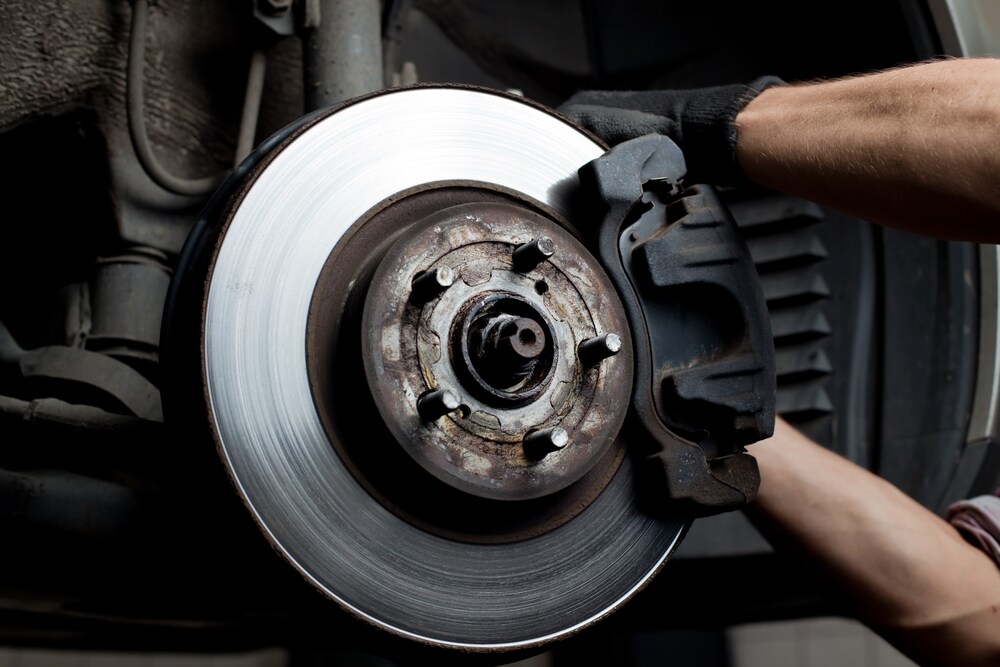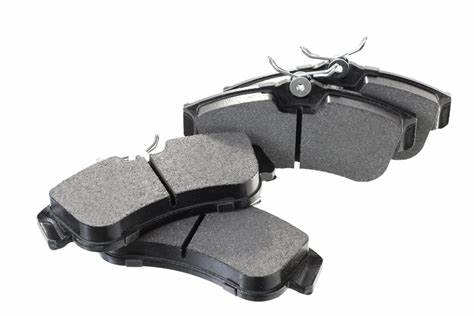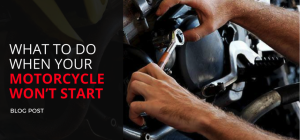Brake pads are a car part that you’ll be replacing reasonably often. The reason? They wear out and wear down quickly if they’re not doing their job correctly. Fortunately, most brake pads are easy to inspect and replace yourself. The brake pads on your car’s disc brakes contain synthetic and metallic materials held in place by resin. These materials are pressed against the rotor to slow your vehicle down. So, when to replace the brake pads? When they’re worn down, they need to be replaced. If your pads become thin enough to cause squealing or vibration in the pedal, you should address this issue as soon as possible. But if you need more time to do it or are trying to figure out what to look for, it is safe to invest in reliable serviceto maintain your high-performance vehicle like Audi. But first, let us understand what brake pads are and how it works.
What are brake pads, and how do brake pads work?
The modern automobile contains numerous devices that make it possible to travel safely at high speeds. One is the braking system, which stops the car when a driver presses the pedal. The brakes consist of two separate parts: rotors and brake pads. The rotors are metallic discs found behind each wheel, while the brake pads are inside callipers – compressing clamps-like devices attached to each rotor. When you hit your brakes, these callipers start to close, squeezing the rotors from both sides. This action produces friction, which causes your wheels to slow down until they come to a complete stop. Once you’ve mastered this function in your car, you may start wondering why you need new brake pads when old ones aren’t damaged; however, some signs might remind you that it’s time to change.
How do I know when my brake pads need changing?
Before you reach out to a professional, let us look at the signs of when to replace brake pads. Here are the top five signs your car needs new brake pads:
Squeaking noise: When you hear persistent squeaking or squealing, it’s time to replace your brake pads. Brake pads wear down over time; when this happens, the brake pad wears into the disc and creates noise. Hydraulic brakes rely on a thin layer of friction between the brake pad and disc to stop your car. When friction isn’t enough to slow you down, your brakes will make noise until they wear through completely. Depending on how much driving you do, this can take some time, but before long, you’ll need new brake pads if there’s a persistent issue with squeaking or squealing.
Indicator lights turn on: Several signs indicate it’s time to replace your brake pads. Another significant sign is that the indicator light on your dashboard turns on. It can quickly check if your brake pads are worn down and need replacement. Another sign is that the car pulls toward one side when you hit the brakes. If you feel uneasy about driving because of these warnings, take your vehicle in and ask a professional mechanic to inspect it immediately.
Deep metal grinding sound: When you hear a grinding metal sound from your brakes, that’s another indicator that it’s time to replace your brake pads. If, on some models of cars, small metal ridges are put into the bottom of the pad to make a loud noise when grinding. On other parts of your tire, leaving it uncarefully could damage other parts of your car, which may cost you much more money in repairs than if you had just replaced those pads.
Vibrating brake pedal: A vibrating brake pedal is a fourth sign you might need to have your brake pads replaced. If it’s difficult to stop your car with the brake pedal and it vibrates or feels unsteady when you press down on it, your brake pads have worn out. A vibrating brake pedal is not standard to prevent further damage to your car or potential accidents. Thus, it’s essential to get your vehicle checked right away; bringing your car into the shop before any further damage occurs will help keep everyone on the road safe by preventing accidents.
Brake pads appear less than a ¼ inch thick: The thickness of your brake pads can be a great indicator of whether they need replacing. If you see that the brakes and pads are less than ¼ inch thick, then there is likely some damage. The most impactful advice for most people is to check their brakes regularly and ensure that their pads, callipers and rotors are in good shape periodically.
How long do brake pads last on average?
Brake pads generally last between 30,000 and 70,000 miles. Of course, this is a wide range and can be affected by many things:
- The type of brake pads you have.
- The composition of your brake pads.
- Even the kind of engine braking (or not) associated with your vehicle.
Some brake pads are made for shorter intervals than others. Still, most people go to a workshop at around 30k miles for replacement, but some get away with it long before needing them replaced if their rotors aren’t worn down too much.
How do you visually inspect brake pads?
To inspect the brake pads visually, you will need a flashlight and a lift to get a good look at the brake pad. If the pad looks thin, less than 1/4″, it might be time when to replace the brake pads. On some brakes, you will see a wear indicator slot down the centre of the pad.
What happens if you don’t replace the brake pads?
Brake-system maintenance is a crucial part of a safe driving experience. Brake pads wear out over time and can become unsafe. Rotors (the discs located behind your wheels) that are not in pristine condition may result in irregular wear patterns or warping, which will cause them to spin more slowly and push your pedal to sink further than usual when applying pressure. It could put you and those around you at risk for severe injury or death. Checking these systems can prevent this damage from occurring prematurely. The wear and tear on your car’s braking system are complex, but you can be sure that if you don’t replace your brake pads, they will become worn out, and you may damage other parts of your car. It can include the brake rotors that need to be replaced and could result in costly repairs.
How much should a full brake job cost?
Keeping your vehicle in good condition and regularly serviced is essential. Replacing brake pads and rotors on average every 30-60,000 miles at least (depending on your car’s environment) is recommended. Brake pads and rotors cost between $250-300+ for an average vehicle and as much as $1000+ for high-end performance models. The labour time can vary from shop to shop but expect anywhere from 2-3 hours of labour time per wheel depending on how busy the shop is that day.
Conclusion
When you catch these telling signs, it is time to flush the brake fluid and check your brakes.It’s a good idea to do this service regularly so that you know when something needs attention and can get it taken care of quickly and inexpensively. Keeping your car in top condition helps you avoid significant expenses later on, so pay attention to these simple regular maintenance tasks.










